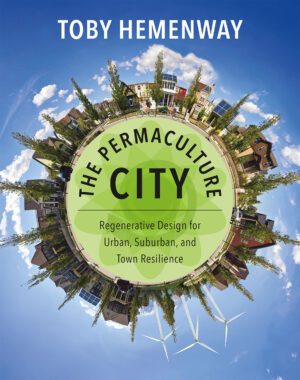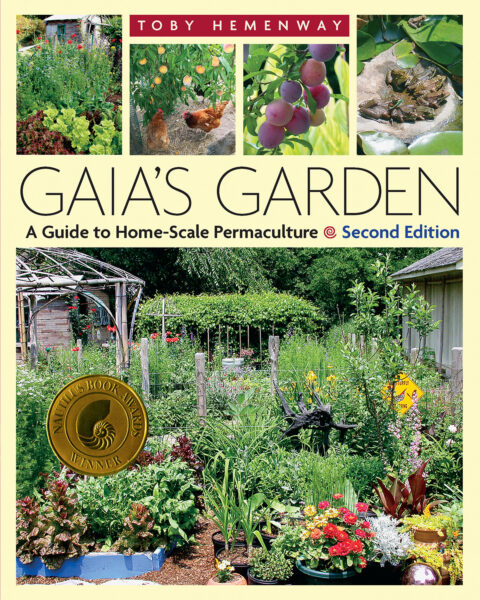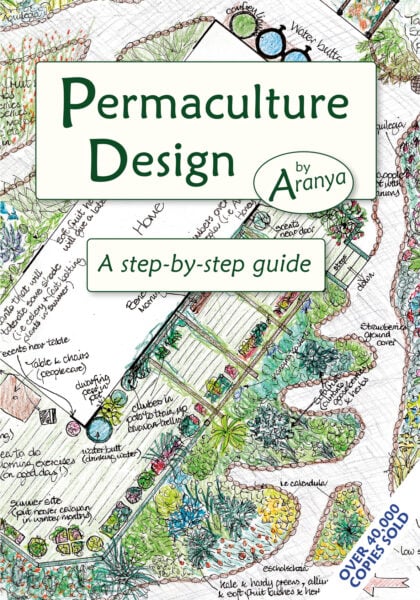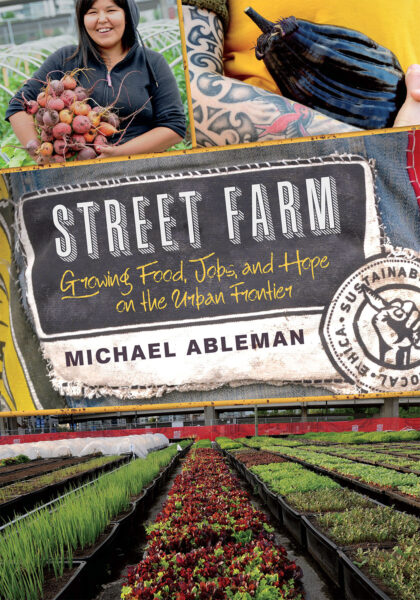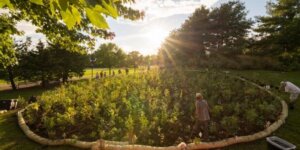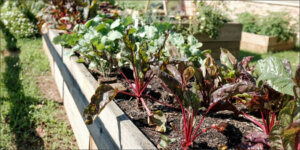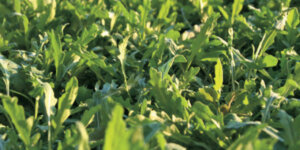Urban Permaculture: The Social, Cultural, and Ecological Potential
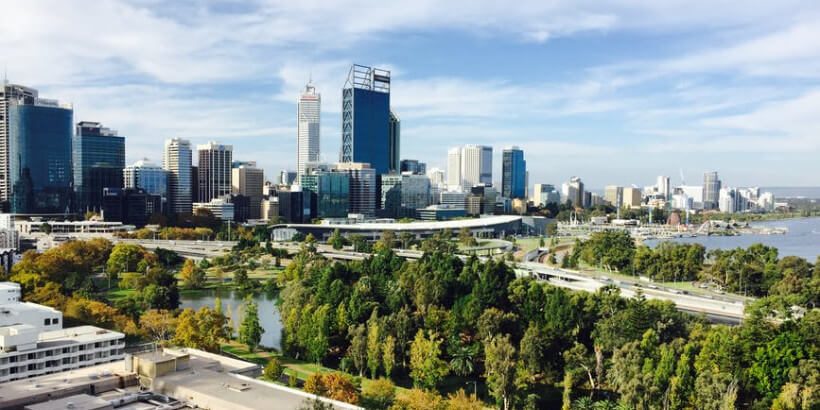
As more people flock to urban areas to live, nowhere are the empowering principles of permaculture more needed and desired.
In his latest book, bestselling permaculture author Toby Hemenway (Gaia’s Garden) demonstrates that the same nature-based approach that connects the pieces of our landscape together in harmonious ways applies perfectly to our need for water, shelter, food, energy, livelihood, and community.
In The Permaculture City, Hemenway moves beyond urban gardening and offers readers practical tips as well as examples from around the country of how people are using permaculture principles to live more sustainably and build deeper connections in urban areas.
Understanding nature can do more than improve how we grow, produce, or consume things; it can also teach us how to cooperate, make decisions, and arrive at good solutions.
Early reviews for the book have been glowing, including this gem of an endorsement from environmentalist and activist Bill McKibben, “Half the world’s people now live in cities, and as Toby Hemenway convincingly demonstrates, they can be at the very forefront of the revolution in how we live. This book will thrill you!”
Publishers Weekly said that in this new book, “Hemenway shows how permaculture concepts can be stretched and rethought in an urban setting to include not just one’s house, garden, and yard but also neighbors, parks, and city agencies.”
Below is a short Q&A with Hemenway about the book, its scope, and what the author hopes readers will learn from reading it.
Chelsea Green: You are known for your bestselling book Gaia’s Garden, but The Permaculture City is more than about urban gardening, it is about applying permaculture principles to a wide variety of urban concepts. What sparked the interest in moving out of the garden right into a huge urban landscape?
Toby Hemenway: One thing I kept noticing, as did many other permaculturists, was that we could design and build these wonderfully productive and biologically healthy landscapes that would function beautifully, but they’d repeatedly be destroyed or compromised by social or economic factors. A great shared garden that was the hub of a community, like ones in South Central Los Angeles or Philadelphia, would be bulldozed for development, or a group of people would find houses in the same neighborhood and build a supportive, informal community and then, because that made the place so desirable, be gentrified out of their homes. So we can build great gardens and landscapes, but we can’t sustain them in a dysfunctional or unjust culture. If being sustainable was simply a matter of buying or building the right stuff, we’d have been there long ago. It’s the political and social side that is the hard part.
We’re developing the idea that because permaculture’s lessons apply so well in creating dynamic, healthy physical landscapes, they can probably do the same for cultural and social landscapes. That’s the hot and exciting edge of permaculture now, under the headings of social permaculture, financial permaculture, and urban permaculture. Now there are neighborhoods and communities all over the US, and all around the world, where these experiments are being done with great potential and success. As I researched the book I kept running across the same communities where these ideas were taking off, some of the work being called permaculture, some of it under other names but following the same principles. Seeing how much innovative and badly needed work toward sustainable systems was being done in cities and suburbs and wanting to see those ideas propagated was what motivated me to write the book.
CG: Are there communities in the US now that are getting this concept of integral and regenerative design better than others? If so, is there a key ingredient to getting started – is it an engaged community, climate zone, or is it something else entirely?
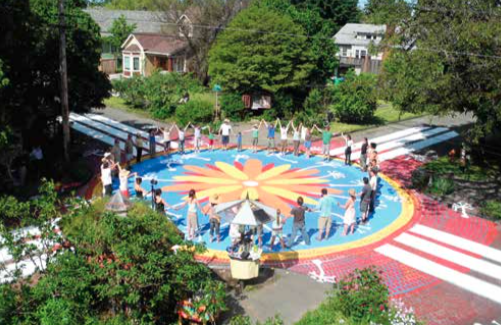
TH: When I was researching the book, I repeatedly came across the same communities as the places where multiple, innovative projects in regenerative urban design was going on. Oakland, Brooklyn, Detroit, Jamaica Plain near Boston, Pittsburg, and Portland, Oregon, among a few others, kept popping up at the top of nearly any search I did. One of the common elements in most, though not all of them, is that they are densely populated, recently or still impoverished or declining communities with serious economic or social problems. So they are, or were, places with a crying need for improvement and their residents were, out of sheer need, open to experimentation. The cities in that list are at different stages of regeneration. Some of them, like Detroit and Pittsburg, are at the early stages and are still affordable for the artists and countercultural types who drive this kind of renewal. Brooklyn is much farther along, ultra hip and heavily gentrified but still full of vigorous experimentation and new ideas. Portland is an outlier here, without the serious social problems of many of these cities but a magnet for young people, and Oregon has long been a place where the ethic is “You can do whatever you want as long as it doesn’t bother me.” So that combination of youth and freedom to innovate today makes for lively social experiments.
Another key feature of most of those places is the strong sense of neighborhood. Many of those cities are not monolithic but are made up of named neighborhoods that each identify as a unique place. Portland, for example, has about 95 distinct neighborhoods, each with its own neighborhood association that has access to city government. So cities like that are more like clusters of a hundred or so villages of five to ten thousand people rather than a homogeneous conurbation. And any systems thinker knows that when you put a set of loosely connected, dynamic elements together, such as all those neighborhoods, novel properties emerge. That’s a big part of what makes up a healthy, thriving city.
CG: Author Sandor Ellix Katz likes to talk about sauerkraut as his gateway fermentation – what is the analogous gateway for urban permaculture? Is it the home garden and food?
TH: Most people come to permaculture through the garden gate, because once you start gardening, it’s hard not to notice that the garden is tied into a much larger web of natural processes going on there—the life in the soil, the relation between healthy soil and nutritious food, the link between plant diversity and a vigorous population of beneficial insects, birds, and other wildlife, the rhythms of life, and the cycling of wastes into soil and then food and back again.
That makes the garden a natural place for ecological awareness to grow. And although many permaculturists remain focused on food and gardening, a growing number are also connecting what goes on in the garden to the larger human world as well. You find that where you have extra food, you have friends, so it connects you to other people. You might get into seed saving, and make more social connections when you trade favorite varieties with other gardeners, as well as seeing a historical connection as you appreciate all the work that went into breeding the seeds you use. You start to notice places where healthy food isn’t available, and that brings awareness of social justice. You notice that not everyone has access to land, that archaic zoning laws prohibit urban agriculture, that having wildflowers in your front yard violates codes or covenants. Gardening anywhere can connect you to nature, but gardening in a city or town is a natural route for many people to become aware of how our social patterns have disconnected us both from nature and from our communities. It turns out that the solutions we learn in the garden, solutions based on ecological principles, apply in the human world as well. And that’s the core lesson of urban permaculture.
Recent Articles
Want to witness the magic of the mini-forest? When you practice The Miyawaki Method, a unique approach to reforestation, you’ll see an empty lot or backyard transform into a biodiverse forest before your very eyes. The following is an excerpt from Mini-Forest Revolution by Hannah Lewis. It has been adapted for the web. Photo Credit:…
Read MoreWhen you plan out how you want your garden to look and operate, you’re setting yourself up for long-term success. Here are some helpful tips on how to plan the best garden this upcoming growing season! The following excerpt is from The Resilient Gardener: Food Production and Self-Reliance in Uncertain Times by Carol Deppe. It has been…
Read MoreThis fig pecan bread is a sweet, delicious, and nutritious side that everyone around the table will enjoy this winter (or maybe you’ll want to keep it all to yourself, we won’t judge). Enjoy! The following is an excerpt from From the Wood-Fired Oven by Richard Miscovich. It has been adapted for the web. What…
Read MoreWhat if we told you that there was a way to extend your growing season and save time & money? The answer is all in arugula. With quick hoops and greenhouse film, you’ll be on your way to harvesting sweet & flavorful arugula in no time. The following excerpt is from The Resilient Farm and…
Read MoreEver wanted to make your own hatchet? Then today’s your lucky day! With some scrap steel, a hacksaw, a file, a drill, a bonfire, a bucket of water, and an oven, you can make this simple, hardy, “democratic” axe. The following excerpt is from A Handmade Life: In Search of Simplicity by William Coperthwaite. It has…
Read More

